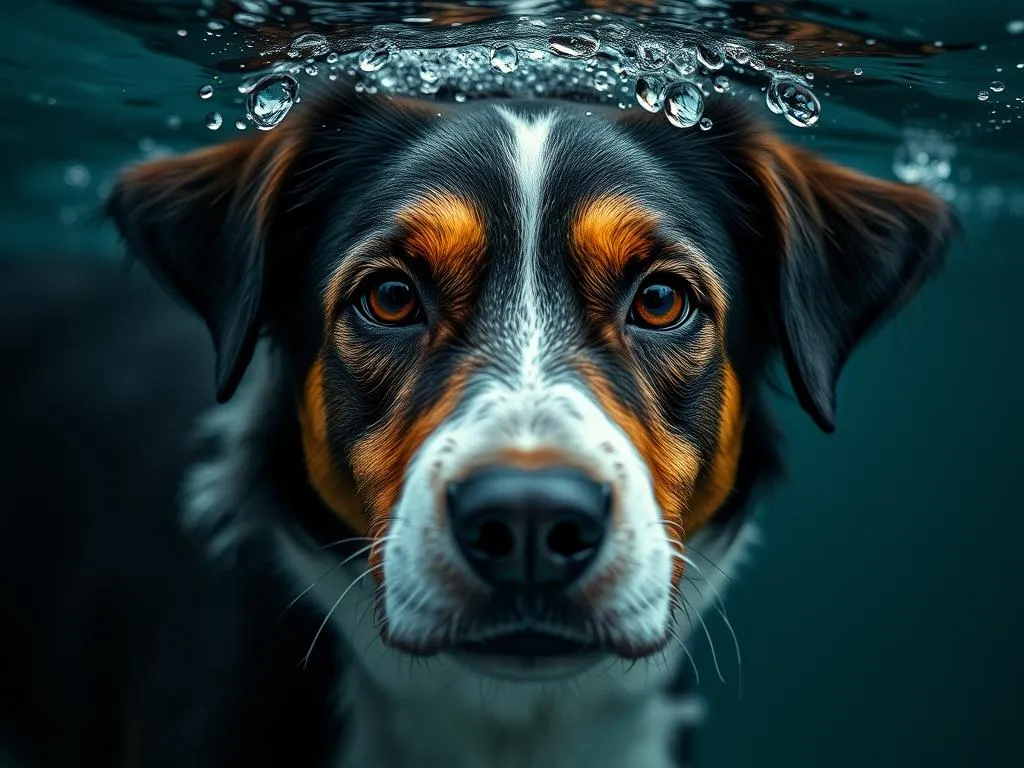
Introduction
When it comes to dog health care, understanding various health issues is crucial for any dog owner. One such condition that can cause significant concern is hydrophobia in dogs. Often misunderstood, hydrophobia is not merely a fear of water; it can indicate serious underlying health problems, particularly rabies. Recognizing and addressing hydrophobia in dogs is vital for the well-being of your furry friend. This article aims to provide a comprehensive understanding of hydrophobia, its causes, symptoms, diagnosis, treatment options, prevention strategies, and answers to frequently asked questions. By the end of this article, you will be better equipped to handle this concerning issue.
Understanding Hydrophobia
Definition and Origin
The term hydrophobia is derived from Greek, where “hydro” means water and “phobos” means fear. Historically, hydrophobia has been associated with rabies, a viral infection that affects the central nervous system and can lead to severe neurological symptoms, including an aversion to water. This aversion is due to the spasms in the throat that occur during attempts to drink, making the act of swallowing water painful and distressing.
Symptoms of Hydrophobia
Recognizing the symptoms of hydrophobia in dogs is crucial for early intervention. The signs can be broadly categorized into behavioral and physical symptoms.
-
Behavioral Signs: Dogs exhibiting hydrophobia may show aggression, withdrawal, or avoidance behaviors, particularly around water. They may become anxious or hyperactive when they sense water nearby.
-
Physical Symptoms: Common physical manifestations include excessive drooling, difficulty swallowing, and unusual vocalizations (like whining or barking).
Distinguishing hydrophobia in dogs from other conditions is essential, as similar symptoms can arise from various issues such as allergies or other neurological disorders.
Causes of Hydrophobia in Dogs
Rabies Infection
The most significant cause of hydrophobia in dogs is rabies, a fatal viral disease. Rabies is primarily transmitted through the bite of an infected animal. Once symptoms appear, rabies is almost always fatal, making vaccination and prevention critical.
Other Potential Causes
While rabies is the primary cause, other factors can lead to hydrophobia in dogs:
-
Fear or Anxiety Related to Water: Some dogs may develop a fear of water due to a lack of exposure or negative experiences, such as falling into a pool.
-
Previous Traumatic Experiences: A dog that has experienced trauma related to water—like near-drowning—may develop an aversion to it.
-
Medical Conditions: Certain medical conditions, such as throat infections or neurological disorders, can cause symptoms similar to hydrophobia, leading to confusion regarding the diagnosis.
Diagnosing Hydrophobia
Veterinary Assessment
If you suspect that your dog is showing signs of hydrophobia, consulting a veterinarian is paramount. A thorough veterinary assessment can help in diagnosing the condition accurately. The vet may conduct various diagnostic tests, including:
-
Blood Tests: To check for infections or other underlying health issues.
-
Neurological Exams: To assess the nervous system’s functionality and identify any abnormalities.
Observational Techniques
In addition to professional veterinary assessments, monitoring your dog’s behavior around water can provide valuable insights. Keeping a record of any symptoms and their triggers will assist your veterinarian in making an informed diagnosis.
Treatment Options
Immediate Care
If you suspect your dog has hydrophobia, it’s essential to take immediate action. Keeping your dog calm and avoiding water exposure is crucial. If the dog becomes agitated or aggressive, employing calming techniques can help manage their anxiety.
Long-term Management
If diagnosed with rabies, treatment options are limited, and the focus shifts to palliative care. However, if hydrophobia is due to anxiety or fear, various treatment strategies can be implemented:
-
Behavioral Therapy: Professional trainers or veterinarians can offer behavior modification techniques to desensitize your dog to water.
-
Desensitization Techniques: Gradual exposure to water in a controlled and positive manner can help your dog overcome their fear.
-
Medication: In some cases, anti-anxiety medications may be prescribed to help manage symptoms while undergoing behavioral therapy.
Preventing Hydrophobia
Vaccination and Health Care
The best defense against hydrophobia in dogs due to rabies is prevention. Ensure that your dog is up-to-date on their rabies vaccinations and schedule regular health check-ups with your veterinarian. This proactive approach can safeguard your dog against many health issues, including rabies.
Socialization and Exposure
Introducing your dog to water gradually can help prevent the development of hydrophobia. Use positive reinforcement techniques to create a positive association with water. Start with shallow water and allow your dog to explore at their own pace, rewarding calm behavior with treats and praise.
Frequently Asked Questions (FAQs)
Is hydrophobia always caused by rabies?
No, while rabies is a primary cause of hydrophobia in dogs, other factors such as water-related anxiety or traumatic experiences can also lead to similar symptoms.
How can I tell if my dog is afraid of water or has hydrophobia?
If your dog shows extreme fear, aggression, or distress around water, combined with physical symptoms like drooling or difficulty swallowing, it may indicate hydrophobia. Observing your dog’s behavior closely will help in understanding their experience.
What should I do if my dog shows signs of hydrophobia?
If you suspect your dog has hydrophobia, it is crucial to consult a veterinarian immediately. They will conduct necessary tests to determine the underlying cause and recommend appropriate treatment.
Can hydrophobia be cured?
Hydrophobia related to rabies is not curable; however, hydrophobia stemming from fear or anxiety can often be managed and treated with behavioral therapy and gradual desensitization.
Conclusion
In summary, understanding hydrophobia in dogs is essential for any dog owner. Recognizing the signs, knowing the causes, and seeking veterinary care can significantly impact your dog’s health and well-being. From prevention through vaccination to effective treatment options, early intervention is key. Addressing hydrophobia not only enhances your dog’s quality of life but also strengthens the bond between you and your furry companion.
Taking the proactive steps discussed in this article can help ensure your dog’s health and happiness, making their journey through life as safe and enjoyable as possible. If you notice any concerning symptoms, don’t hesitate to consult your veterinarian for guidance and support.









